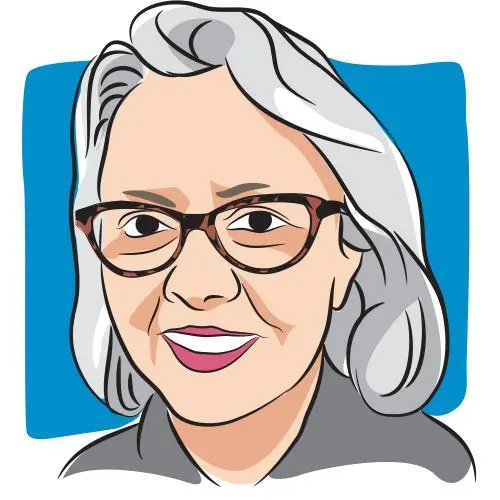Video
The Value of Partnerships for Hereditary Cancers
As a part of its “Speaking Out” video series, on behalf of FORCE, CURE® spoke with Diane Rose, their vice president of volunteer programs, about how advocacy partnerships can bring greater awareness and education to patients with cancer and their families.
Transcription: Colleen Moretti: What kind of partnerships does FORCE participate in? How does that benefit patients?
Diane Rose: FORCE is engaged in a wide variety of partnerships. With over 25 years of experience and working with so many partners over the years, we really value each collaboration and what it brings to our community.
So for example, FORCE collaborating right now with over 30 partners in a project that's supported by the Centers for Disease Control and Prevention to tackle health disparities experienced by young women with breast cancer and especially those from marginalized groups. We've been involved in joint coalitions of other partners when advocating changes to policy that impact the health of our constituents. When one organization pushes for a change that increases access to care, it may not move the needle, but when dozens of organizations work together we can really move that needle and make an impact for all of our communities.
We also partner with researchers from study development, recruitment into the into the clinical trial or study, and then all the way through dissemination of the study results. And this ensures that our community's needs are considered when that research is being developed. FORCE trains people who are new to science to use their personal experiences with hereditary cancer to guide the research through our FRAT program — that's our force research advocate training program. And this team of volunteers along with FORCE staff and the researchers work together to accelerate research.
We also work one on one with community partners and those who are serving traditionally underserved or underrepresented communities. And our goal there is to amplify these voices, to bring their resources and the unique perspectives to our community. An example of this is our spot her awareness campaign — it's an educational initiative with industry partners, and other community partners for awareness of endometrial cancer, and it allows us to significantly increase the reach of these important campaigns beyond our constituency and reaching those marginalized groups.
We have a listing of our partnerships on our website, you know, under partners, where we highlight our partners mission and the work that they're doing. So people who come to FORCE can see the work that we're doing in collaboration with these partners but also have access to the partners where they might have something that we are not bringing
Moretti: How can these partnerships further education and create better opportunities for patients?
Rose: For example, with our CDC effort on the educational program, XRAY we're looking behind the headlines of news articles, and help our community understand the research and science about cancer that they see on the news and in social media. So, we've begun to train our partners on digital health literacy, which correlates directly to our spot the boast initiative where we're teaching people how to determine what they should believe when they're looking for health information online.
Another great example of even partnerships that are considered mostly funding can help is with TELETIES. It's a hair tie company and every single packet of TELETIES talks about force and sends people to our site. So there's millions of TELETIES packages out there. And this is just another way to amplify our goal to spread awareness of hereditary cancer and educate people. And I'd be remiss if I didn't mention our great partnership with CURE®, who helps us educate people about hereditary cancer through our combined efforts including this interview.
Moretti: How does partnering with other groups and institutions reach a broader audience and why is that important?
Rose: FORCE focuses on cancers caused by a hereditary mutation, while other organizations may focus on the wider cancer community. So by joining with them, we can ensure that people in their community have access to the latest information on hereditary cancer and tools that are specific to their needs. And conversely, many organizations focused on specific types of cancer may offer a very different support experience, including for those in treatment, which is something that we typically don't do. And there's many smaller organizations that work locally, at that community level, or they're focused on the marginalized communities and we can provide them with resources that they simply don't have the time or the dollars to develop, such as syndicated content of our XRAY program, FORCE brochures. And then in turn, we're able to learn from them what their community needs are. And this can lead to joint initiatives such as webinars or awareness campaigns, and it helps us as we develop content and programs to make sure that the needs of all communities are represented.
Moretti: Why do groups like FORCE partner with other institutions?
Rose: I think the bottom line is and the statement that we'd want to leave with is, no one organization can be all things to all people. And we recognize and value the unique areas of focus and expertise of all of our partners, and knowing that by partnering with them, we can increase the resources and bring more relevant resources to all of our constituents.
This transcription has been edited for clarity.




